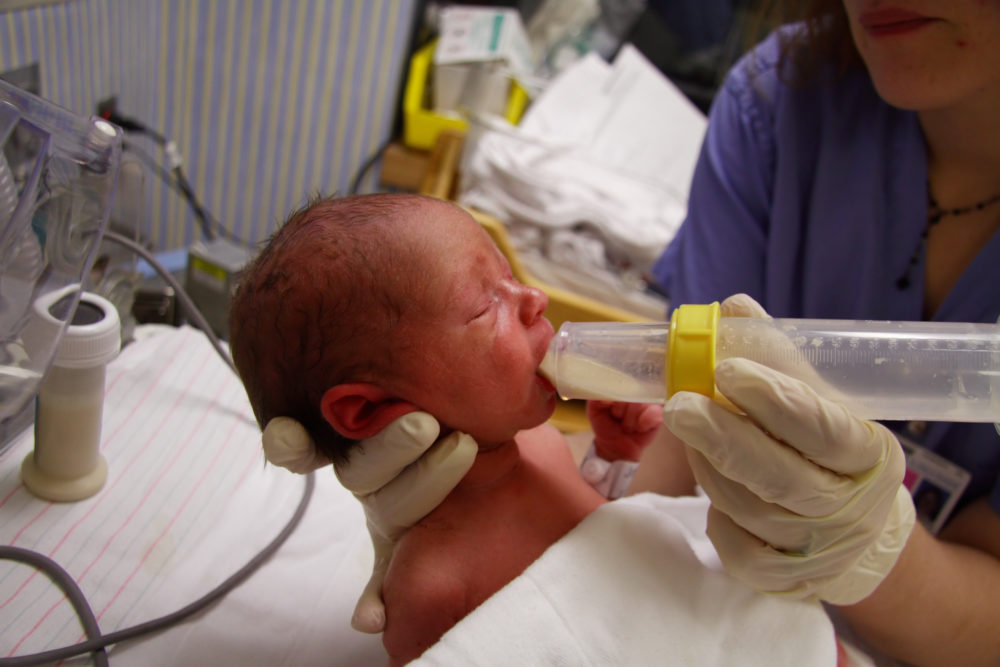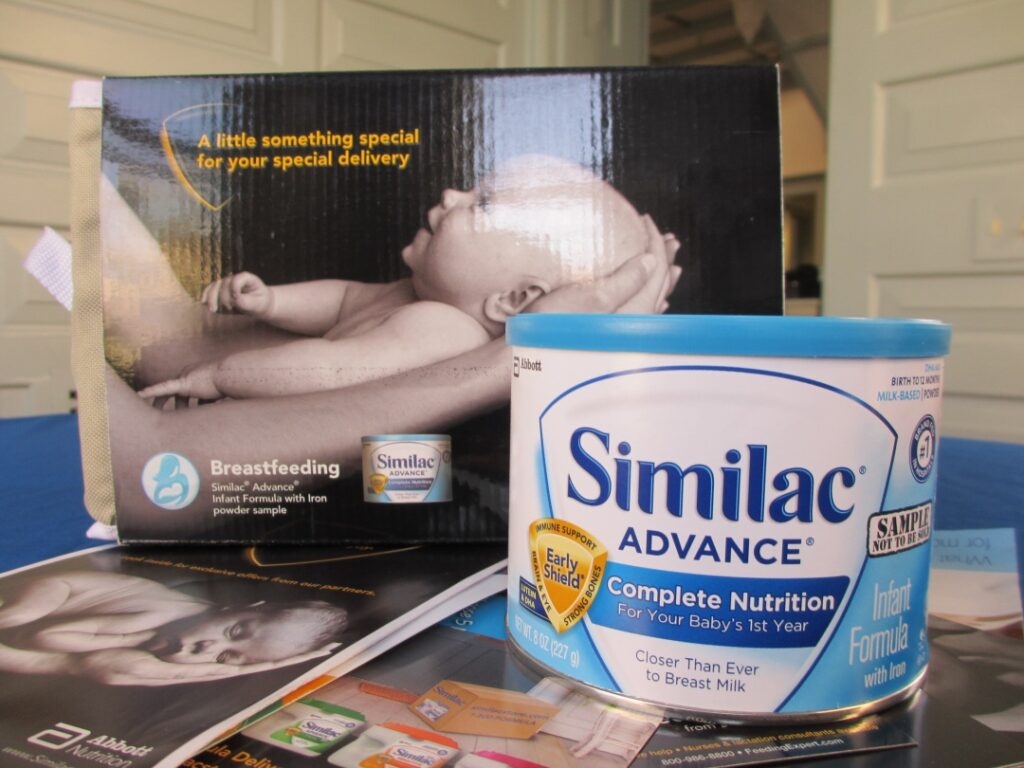
Examining the Link Between Similac, Enfamil, and NEC
Similac and Enfamil are widely recognized and trusted names in the baby formula industry, with a significant market presence. However, as the number of NEC (necrotizing enterocolitis) cases continues to rise, questions have arisen about the safety and suitability of these formulas for newborns.
Plaintiffs in the lawsuits claim that certain ingredients or components within Similac and Enfamil may contribute to the onset of NEC, leading to severe health complications and, in some cases, infant mortality.
In this article, we will delve into the complex issue of the alleged link between Similac, Enfamil, and NEC.
What is NEC?

Necrotizing Enterocolitis (NEC) is a severe gastrointestinal disease primarily affecting premature infants in neonatal intensive care units. It is characterized by inflammation and damage to the intestinal tissues, leading to potentially life-threatening complications.
According to the National Library of Medicine, the global incidence of NEC ranges from 0.3 to 2.4 cases per 1000 live births. Approximately 70% of these cases are observed in premature infants born before 36 weeks of gestation.
NEC affects approximately 2% to 5% of all premature infants and accounts for nearly 8% of all admissions to the neonatal intensive care unit (NICU). Mortality rates vary from 10% to 50% on average. However, in severe cases involving complications, the mortality rate can approach 100%
NEC is a significant concern in the healthcare community due to its high mortality and morbidity rates among affected infants.
Understanding the nature and impact of NEC is crucial in recognizing the importance of research, prevention strategies, and potential links to factors such as infant feeding practices, including the use of baby formulas like Similac and Enfamil.
Similac and Enfamil as Prominent Baby Formula Brands
Similac and Enfamil stand out as leading baby formula brands, renowned for their widespread popularity and market dominance. With a long history of providing infant nutrition, these brands have gained the trust of parents and healthcare professionals alike.
Similac, manufactured by Abbott Laboratories, and Enfamil, produced by Mead Johnson Nutrition, offer a wide range of formulas tailored to meet the nutritional needs of infants. Their extensive product lines cater to various stages of a baby’s development, including specialized formulas for premature infants and those with specific dietary requirements.
Similac and Enfamil’s prominence in the industry makes the allegations linking them to NEC all the more significant and prompts a thorough examination of their formulas.
Lawsuits Alleging Link to NEC

The Similac and Enfamil lawsuit alleges a connection between their products and the development of NEC in infants. These legal cases claim that Similac and Enfamil cow milk-based formulas contribute to the onset of NEC.
According to TorHoerman Law, multiple scientific studies have established a correlation between the consumption of cow milk formulas and the occurrence of NEC. Although the scientific community has been aware of these connections for some time, legal actions against baby formula manufacturers have only emerged more recently.
The lawsuits seek to establish accountability for the alleged harm caused to infants and raise concerns about the safety and suitability of these widely used baby formulas. The outcome of these lawsuits may have significant implications for both the baby formula industry and parents seeking the best nutrition for their infants.
Scientific Studies Linking Baby Milk Formula to NEC
Scientific studies and research have played a crucial role in investigating the potential link between Similac, Enfamil, and NEC. These studies have examined various aspects, including the composition of the baby formulas, the prevalence of NEC among formula-fed infants, and the association between specific ingredients and the development of NEC.
According to New York Injury Law News, in a study conducted in 1990, researchers discovered that the incidence of NEC was 6-10 times higher in infants exclusively fed formula compared to those exclusively breastfed and three times higher in infants who received a combination of formula and breast milk.
Furthermore, in 2011, a study conducted by Johns Hopkins Medical Institution revealed that extremely premature babies who were fed human donor milk had a lower risk of developing NEC compared to those fed a standard premature infant formula made from cow’s milk.
Regulatory Oversight in the Matter

Entities such as the U.S. Food and Drug Administration (FDA) are responsible for setting standards, conducting inspections, and enforcing regulations to safeguard public health. In the context of the alleged link between Similac, Enfamil, and NEC, regulatory bodies may investigate the claims, review scientific evidence, and take appropriate actions if necessary.
Their involvement provides reassurance to consumers and underscores the importance of adherence to safety protocols in the manufacturing and marketing of baby formulas.
Industry Response to the Allegations
In response to litigation, manufacturers have implemented various measures, including product recalls, reformulations, and changes in marketing strategies. These actions are aimed at addressing the allegations, assuring the public of their commitment to safety, and complying with regulatory guidelines.
The industry’s response reflects a proactive approach to address consumer concerns and maintain trust while also emphasizing the importance of ongoing research and collaboration with the medical community to ensure the safety and well-being of infants.
Parental Concerns and Guidance

According to World Health Organization (WHO), the manipulative marketing strategies employed to promote infant formula lead to excessive consumption, discourage breastfeeding, erode mothers’ confidence, and exploit parents’ desire to provide the best for their children.
The marketing of formula milk represents a largely overlooked hazard to the well-being of infants and children. Despite only marginal improvement in exclusive breastfeeding rates for babies aged 6 months and younger over the past two decades, formula milk sales have nearly doubled.
Expanding breastfeeding practices could potentially prevent approximately 800,000 child deaths and 20,000 breast cancer deaths among mothers annually.
The lawsuits surrounding Similac, Enfamil, and NEC have amplified parents’ concerns about the formula milk, leaving them anxious and seeking guidance. It is crucial to address these concerns and provide parents with reliable information.
Empowering parents with guidance on recognizing NEC symptoms, discussing formula choices with pediatricians, and understanding the importance of proper hygiene and feeding practices can help alleviate their concerns and ensure the best possible care for their infants.
Conclusion
The alleged link between Similac, Enfamil, and NEC has raised significant concerns within the medical community and among parents. While the lawsuits and scientific research examining this association continue, it is essential to approach the topic with caution and rely on reliable and up-to-date information.
Regulatory bodies play a crucial role in monitoring the safety of baby formulas, and industry responses to the lawsuits have prompted changes in marketing and product formulation. Parents should seek guidance from healthcare professionals, stay informed about the latest research, and make informed decisions regarding infant nutrition.
By addressing parental concerns and providing accurate guidance, we can work towards ensuring the health and well-being of newborns.